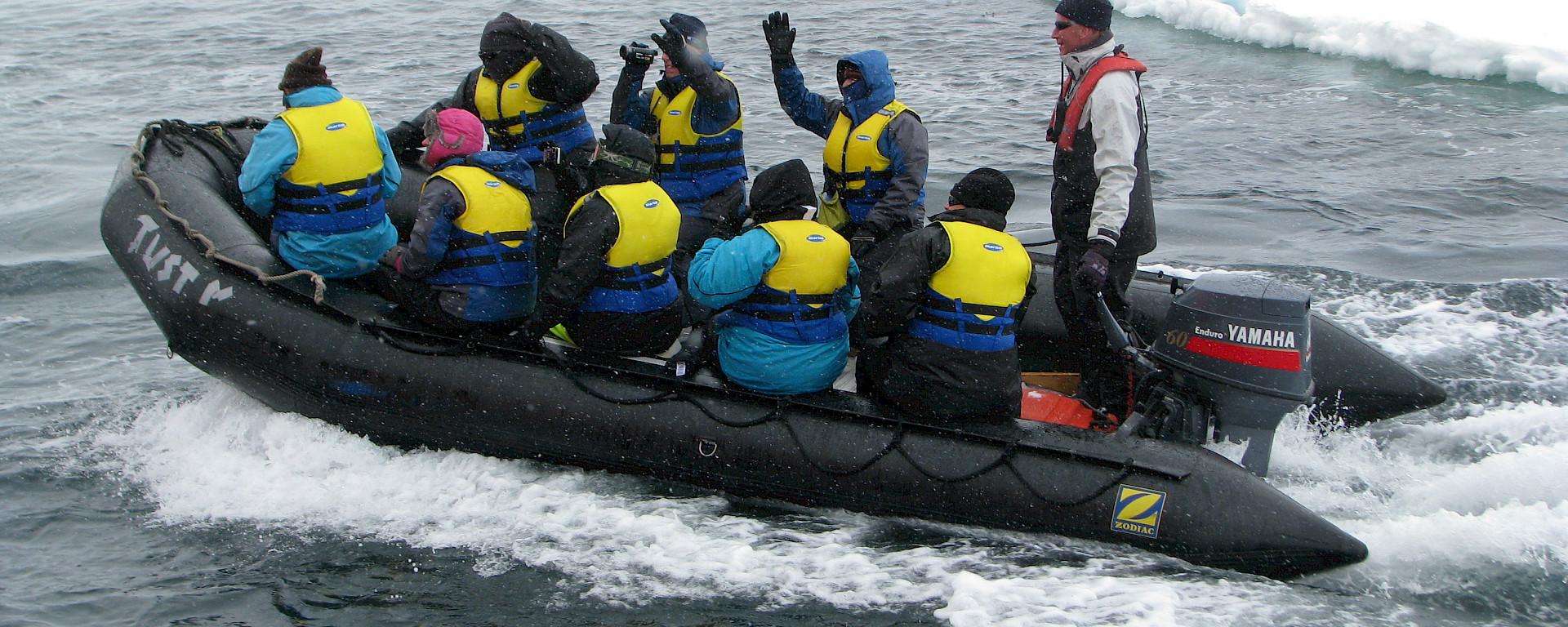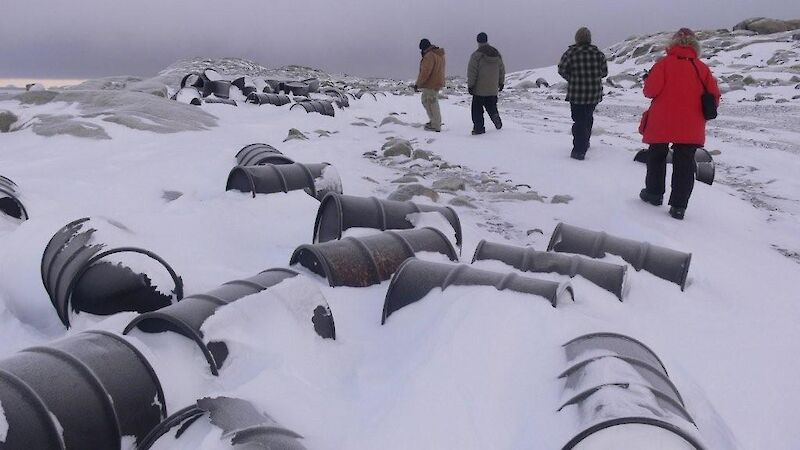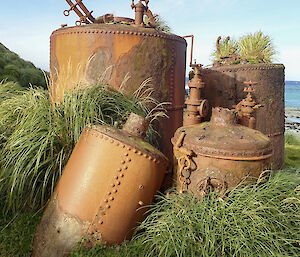For a little over 100 years, people have been travelling to Antarctica. In that short time, most parts have been visited and we have left more than just footprints.
Human impacts include:
- harvesting some Antarctic species to the verge of extinction for economic benefit
- killing and disturbing other species
- contaminating the soils
- discharging sewage to the sea
- leaving rubbish, cairns and tracks.
Changing attitudes
There are few unvisited places left on Earth. We have started to realise their enormous value to humanity. The clean air, water and ice of Antarctica are now of global importance to science. They help us understand how the Earth’s environment is changing – both naturally and because of human activity. Tourist operators have tapped into a huge demand to visit the last great wilderness on Earth.
We have also realised that visiting Antarctica can have an environmental impact. Science and tourism both have the potential to damage the very qualities that draws them to Antarctica.
Scales of environmental impacts in Antarctica
Environmental impacts in Antarctica occur at a range of scales. Global warming, ozone depletion and global contamination have planet-wide impacts. These affect Antarctica at the largest scale.
Fishing and hunting have more localised impacts, but still have the potential to cause region-wide effects. Visitors, such as scientists and tourists, have even more localised impacts on the region.
Global impacts show in Antarctica
The Antarctic region is a sensitive indicator of global change. The polar ice cap holds within it a record of past atmospheres that go back hundreds of thousands of years. This record allows us to study the earth’s natural climate cycles. The significance of recent changes in climate can be judged against this record.
Impacts of hunting and fishing
Hunting for whales and seals drew people to the Antarctic in the early years of the 19th century. Within only a few decades, these activities caused major crashes in wildlife populations.
Sealing
The Antarctic fur seal was at the verge of extinction at many locations by 1830. The seal populations of Macquarie Island have been protected since 1933, by the island’s status as a wildlife sanctuary. The seals of Australia’s sub-Antarctic islands were further protected in 1997 when both Macquarie and the Heard and McDonald Islands were added to the World Heritage list. Exploited seal populations of the Southern Ocean have recovered substantially. They are no longer endangered.
Whaling
Whaling in the Southern Ocean began in earnest in the early 1900s and grew very quickly. By 1910, the Southern Ocean provided 50% of the world’s catch. The history of whaling is a repeated cycle. Whalers targeted the most profitable species, depleted stocks to unviable commercial levels and then moved on to another species.
The International Whaling Commission (IWC) first met in 1949. Blue and humpback whales became fully protected in the 1960s. Protection was extended to fin and sei whales in the 1970s. In 1986 the IWC decided to suspend all commercial whaling. Since that moratorium, whaling has been limited to a handful of nations that harvest whales under the ‘scientific whaling’ provisions. There are indications that whale populations are beginning to recover.
Fishing
Fishing is the only large-scale commercial resource currently harvested in the Antarctic Treaty area. Major fisheries world-wide have faced over-exploitation. Unless the controls established for Antarctic fisheries are enforced, the Southern Ocean will face the same over-exploitation.
The major negative effects of fisheries are:
- potential for over-fishing of target species
- effects on predator populations dependant on the target species as a food source
- mortality of non-target species caught by fishing equipment
- destruction of habitat.
The Convention on the Conservation of Antarctic Marine Living Resources (CCAMLR) manages living marine resources in the convention area.
Long-line fishing is a particular risk to albatrosses. CCAMLR has introduced a Conservation Measure to reduce the incidence of seabird mortality during long-lining. The Australian Fisheries Management Authority limits the fishery around Heard and Macquarie Islands to trawling to minimise the impacts on seabirds.
The Australian Antarctic Division has established the Antarctic Marine Living Resources program to provide the scientific basis for ecologically sustainable management of Southern Ocean fisheries.
Introduced species
Biosecurity is an important part of managing the Antarctic environment. The risk of introducing species, including disease-causing species, is of particular concern in Antarctica. Introduced species have caused major environmental problems on every other continent of the world. They have caused significant changes to the ecology of most sub-Antarctic islands.
Australia hosted the first international meeting to consider disease in Antarctic wildlife. Strict biosecurity measures reduce the risk of introduction and spread of diseases to Antarctic wildlife.
Undoing past damage
Environmental management aims to ameliorate past environmental impacts and reduce current and future impacts.
The Australian Antarctic Program is developing procedures for the clean up and remediation of abandoned work sites and disused tip sites. In the early days, waste management included using open tips and pushing waste onto the sea ice.
Commitment to the Madrid Protocol confers the obligation to clean-up abandoned work sites and waste tips so long as the process of clean-up does not cause greater adverse impacts or cause the removal of historic sites or monuments.
Australian scientists are developing new clean up and remediation procedures that will not cause greater impacts.




